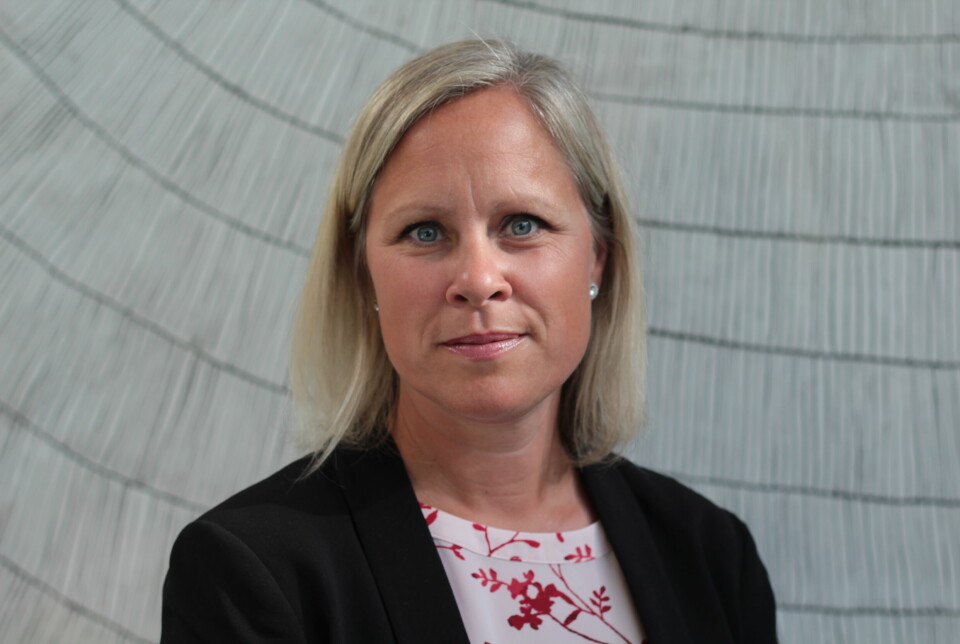DEBATE
Advertisement
DEBATE. The first commercial hydrogen flight is expected to be in the air in Sweden within the next decade. Now Sweden needs to achieve uniform value chains for hydrogen, including production, storage, transport and distribution, writes Maria Hagelberg, KLM.
This is a discussion article. The opinions expressed are the writer's own.
The aviation sector accounts for between 2 and 3 percent of climate-affecting emissions globally, and it is crucial that we reduce aviation's impact. At the same time, we need to think anew when new technology emerges.
Within just a few years, hybrid powered aircraft are expected to reach the market, with engines that combine batteries with traditional fuel or SAF (Sustainable Aviation Fuel, biofuels). The launch of hydrogen-powered flights will take longer, but may be possible by 2035. Then the first zero-emission planes are also expected to be launched with a capacity of around 75 seats, enabling a replacement of our smallest regional aircraft.
Before 2040, flights with a single aisle can be replaced by zero-emission options. Twin-aisle aircraft are unlikely to be 100 percent emission-free, but the first more sustainable models are expected to be on the market before 2043.
Advertisement
The new aircraft types will create interesting challenges for airlines, as both capacity and range will be smaller than today. We in the industry take sustainability seriously and get involved in the transition, but this also means that we must be open to new business models and ways to solve the challenges.
At KLM, we have taken significant steps towards becoming more sustainable through more fuel-efficient aircraft models and investing in sustainable fuel. We work continuously for increased use of SAF and no other company has used more SAF than us in the last two years.
Scandinavia also needs flights in the future, especially in the areas where there are no realistic alternatives. The advantages of hydrogen are that it can be produced locally, for example from surplus power. In this way, we can get a higher utilization rate of resources without having to transport hydrogen over long distances.
In 2023, KLM used approximately 80,000 tons of SAF, corresponding to 1 percent of all our fuel use. That is almost a doubling compared to 2022 levels (0.6 percent). KLM is therefore expected to continue to be the world's largest user of SAF and account for approximately 16 percent of global production.
Despite that, we face major challenges linked to access to SAF. There is simply not enough cooking oil, sawdust or other biomaterials to produce the amount of SAF that is in demand. To reach the targets for 2050, the aviation sector globally needs 450 billion liters of SAF, while the current production today is 600 million liters.
In the aviation industry, intensive work is underway to reach that goal, where, among other things, over 130 renewable fuel projects and 57 new SAF agreements have been entered into globally. It is also pleasing that a refinery at Hisingen in Gothenburg was recently inaugurated with the aim of producing renewable jet fuel.
do not miss
Then the “biggest” hydrogen flight takes off in Skellefteå: “An important solution”
SAF is necessary and crucial for sustainable aviation, especially as it will be many years before hydrogen aircraft become a reality. The investments must come from all sides, with different solutions and technical innovations at different times. At the same time, there is an increased need for alternative sources, where both e-fuels and synthetic alternatives can increase availability.
Recently, Swedavia, its Norwegian counterpart Avinor, SAS, French Airbus and state-owned Vattenfall entered into a cooperation agreement to develop infrastructure for hydrogen at Norwegian and Swedish airports. At the same time, the first commercial hydrogen flight is expected to be in the air in Sweden within the next decade.
Scandinavia has great export potential for hydrogen. Sweden with its rich access to nuclear and hydropower, Norway rich in renewable hydropower and Denmark with its wind power all have the opportunity to produce more hydrogen than is consumed. Hydrogen can be used as a sustainable alternative that significantly reduces carbon dioxide emissions from air travel. This is something that the Swedish Energy Agency also confirms in its proposal for a national strategy for hydrogen.
We can't just be satisfied with incentives for increased use of sustainable fuel, airports that are adapted for hydrogen aircraft and airlines being able to refuel SAF locally. We also need unified hydrogen value chains, including production, storage, transport and distribution. The countries around the North Sea have already begun the work of establishing such value chains, and this provides further opportunities for exports from Scandinavia to the aviation industry.
Scandinavia also needs flights in the future, especially in the areas where there are no realistic alternatives. The advantages of hydrogen are that it can be produced locally, for example from surplus power. In this way, we can get a higher utilization rate of resources without having to transport hydrogen over long distances.
Hydrogen as a fuel for the aviation industry has the potential to create regional values and strengthen green competitiveness. This will also facilitate access for other sectors such as ferry operations, trucking and other industries.
There are great competitive advantages and opportunities in promoting a sustainable aviation industry – but then the oil age must pave the way for the hydrogen age. Scandinavia can be a strong driving force in this transition.
Maria Hagelbergsustainability officer at KLM Northern Europe
